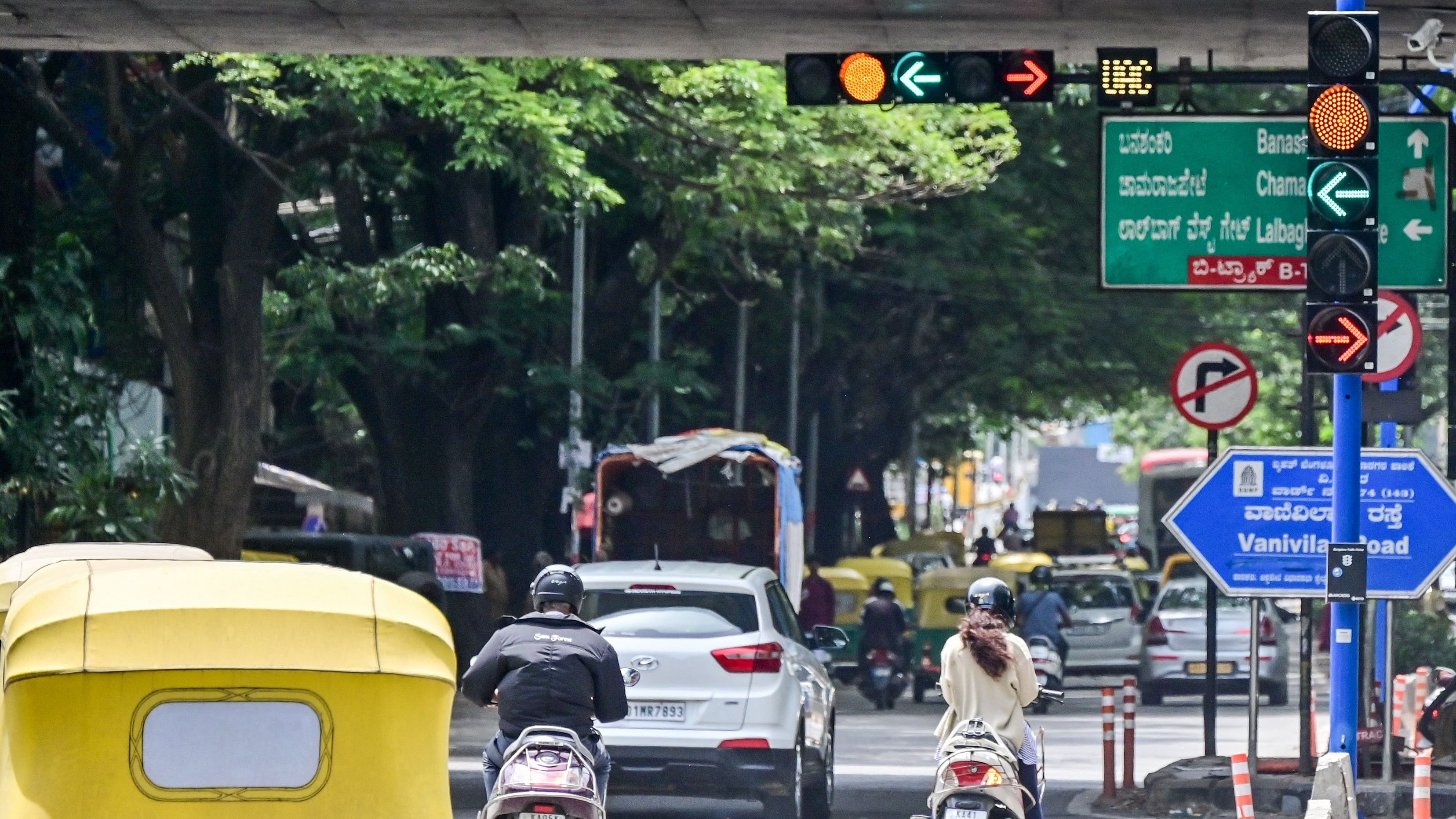
The AI system at Basavanagudi National College signal.
Credit: DH Photo
Bengaluru: The installation of new traffic signals at Hudson Circle has reduced vehicle travel time by 33%, according to MN Anucheth, Joint Commissioner of Police (Traffic), Bengaluru.
This improvement is part of the Bengaluru Adaptive Traffic Control System (BATCS), a project designed to streamline traffic flow across the city.
The BATCS project employs the Composite Signal Control Strategy (CoSiCoSt), developed by the Centre for Development of Advanced Computing (C-DAC). Unlike traditional fixed-timing signals, these adaptive signals use camera sensors to monitor real-time traffic flow, adjusting signal timings dynamically.
Launched in May, the project has so far expanded to 60 key junctions, including National College Junction, Town Hall Junction, and Halasuru Gate Junction. The goal is to extend this AI-powered system to 165 junctions by January. “By March 2025, Bengaluru will have 500 traffic signals, with 250 of them AI-based,” Anucheth said.
At the current 60 junctions, the adaptive signals operate automatically 90% of the time, switching to Vehicle Actuated Control (VAC) or Adaptive Traffic Control System (ATCS) modes during peak hours. Manual mode is used only 5% of the time, mainly for VIP or ambulance movements.
“For the first time, AI-based signals are active during peak hours,” Anucheth said, stressing at the police department’s goal of achieving fully automated signalling across all junctions in the near future.